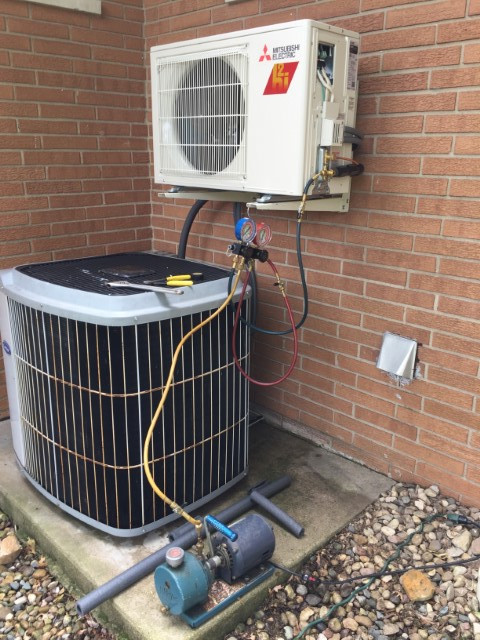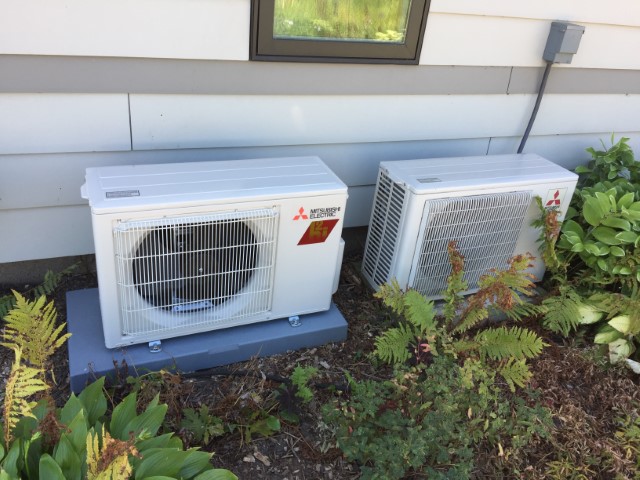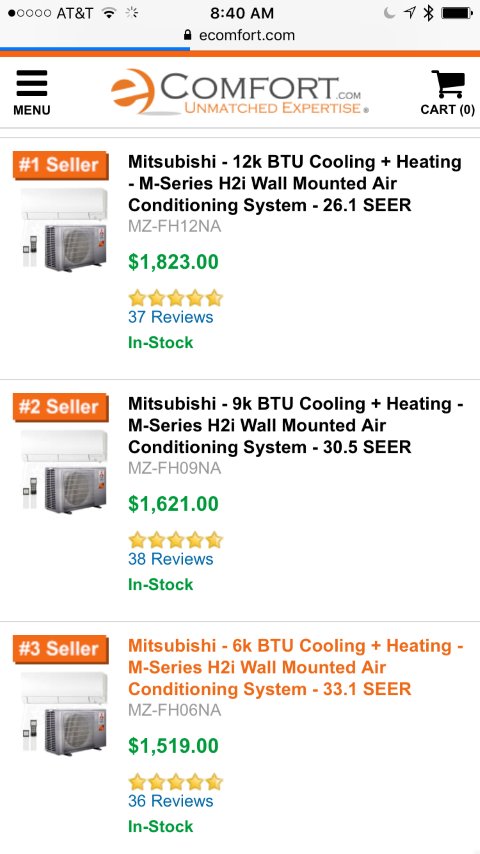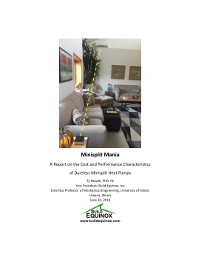 Figure 1 - A 1 ton “mini” being added to a home with central AC for zone control and improved efficiency at partial loads.
Figure 1 - A 1 ton “mini” being added to a home with central AC for zone control and improved efficiency at partial loads.Figure 1 shows the addition of a 1 ton ductless mini-split to a home’s central conditioning system. The home’s owner reports that the mini-split has improved the home’s comfort and efficiency.
Figure 2 shows two ductless mini-split heat pumps at Equinox House. Equinox House, a zero-plus solar powered home in central Illinois, has been conditioned for the past 8 years with a single 1 ton ductless mini-split heat pump. A second ductless mini-split heat pump was added last fall in order to demonstrate the new CERV2’s ability to control multiple distributed conditioning systems (stay tuned for future articles!).
Over the past 10 years, high efficiency mini-split heat pumps are growing in popularity. We are seeing mini-split heat pumps in many projects. Some homes, similar to Equinox House, only use mini-split heat pumps for conditioning. Other homes use them in combination with other systems for additional conditioning flexibility and redundancy.
Let’s assume you are working on a project and are considering using ductless mini-split heat pumps. You’ve worked hard to design a high performance home that only requires 1 ton (12,000Btu/h) of heating and/or cooling capacity and are considering using a ductless mini-split. Should you:
1) choose a single 1 ton mini-split heat pump?
2) choose two 1/2 ton mini-split heat pumps?
3) choose two 1 ton mini-split heat pumps?
The answer isn’t so straightforward. The first two answers make sense. The third answer seems unreasonable because everyone knows overcapacity is inefficient. Or is it?
Answer 1) is least expensive in upfront cost, but distribution of heating and cooling from a single mini-split requires a relatively simple home (open floor plan) without significant spatial and temporal comfort load variations as well as occupants with comfort condition tolerance.
 Figure 2 - A 3/4 ton mini-split has been added to the original 1 ton mini-split in Equinox House. The new unit has been installed to demonstrate the CERV2’s ability to control distributed mini-splits with our CERV-IR (CERV-Infrared) technology. Other than minor differences in looks with an 8 year age difference, the two minis are identical. The two minis give us an efficiency boost over the single mini in summer and winter!
Figure 2 - A 3/4 ton mini-split has been added to the original 1 ton mini-split in Equinox House. The new unit has been installed to demonstrate the CERV2’s ability to control distributed mini-splits with our CERV-IR (CERV-Infrared) technology. Other than minor differences in looks with an 8 year age difference, the two minis are identical. The two minis give us an efficiency boost over the single mini in summer and winter!We pay a significant price in human productivity when we’re uncomfortable. We lose one percent in human productivity for every degree (F) outside of our personal comfort range. And 1% of a human’s productivity is much, much more valuable than the energy cost of comfort conditioning.
Answer 2) is reasonable because although the upfront cost is more expensive, a home can be “zoned” for better comfort control. An additional benefit is that two “half ton” mini-split heat pumps operate more efficiently than a single one ton mini-split! One high quality mini-split manufacturer (see Figure 4) lists a SEER value of 33.1 for their half ton, ductless mini-split, and a SEER value of 26.1 for their one ton unit, for an efficiency increase of 27%! There are few opportunities in today’s high performance homes with this type of energy performance gain.
Answer 3) is not so obvious because in yesterday’s world of “bang-bang” (on/off) capacity control, a significant efficiency loss occurs with oversized systems. In today’s world of variable speed (inverter) capacity control, the opposite occurs. Two 1 ton mini-split heat pumps operating at half capacity have higher combined efficiency than a single 1 ton heat pump operating at capacity! In fact, two 1 ton mini-split heat pumps operating at half load can have the same efficiency as the two 1/2 ton mini-splits operating at full load. What?
Here’s the interesting part. Several manufacturers’ small tonnage mini-splits are all the same machine! A close examination of a manufacturer’s line of low capacity mini-split heat pumps (eg, 1/2 ton or 6000Btu/h; 3/4 ton or 9000Btu/h; 1 ton or 12,000Btu/h; 1 1/4 ton or 15,000Btu/h nominal capacities) reveals they are identical machines with the same nuts, bolts, sensors, and circuit boards. The three units shown in Figure 4 have identical dimensions, electrical specifications, refrigerant charge, and installation instructions, but different prices.
 Figure 4 These three ductless mini-splits by mini-split technology pioneer Mitsubishi are all the same unit. Height, width, amount of refrigerant, installation instructions…..everything is identical except the cost and performance. Read our Mini-split Mania report to learn more detail about the value of comfort, and the cost and performance characteristics of ductless mini-splits.
Figure 4 These three ductless mini-splits by mini-split technology pioneer Mitsubishi are all the same unit. Height, width, amount of refrigerant, installation instructions…..everything is identical except the cost and performance. Read our Mini-split Mania report to learn more detail about the value of comfort, and the cost and performance characteristics of ductless mini-splits.For those who would like to more about the cost of discomfort and the characteristics and cost of today’s high performance ductless mini-split heat pumps, check out our new Mini-split Mania report below!

























